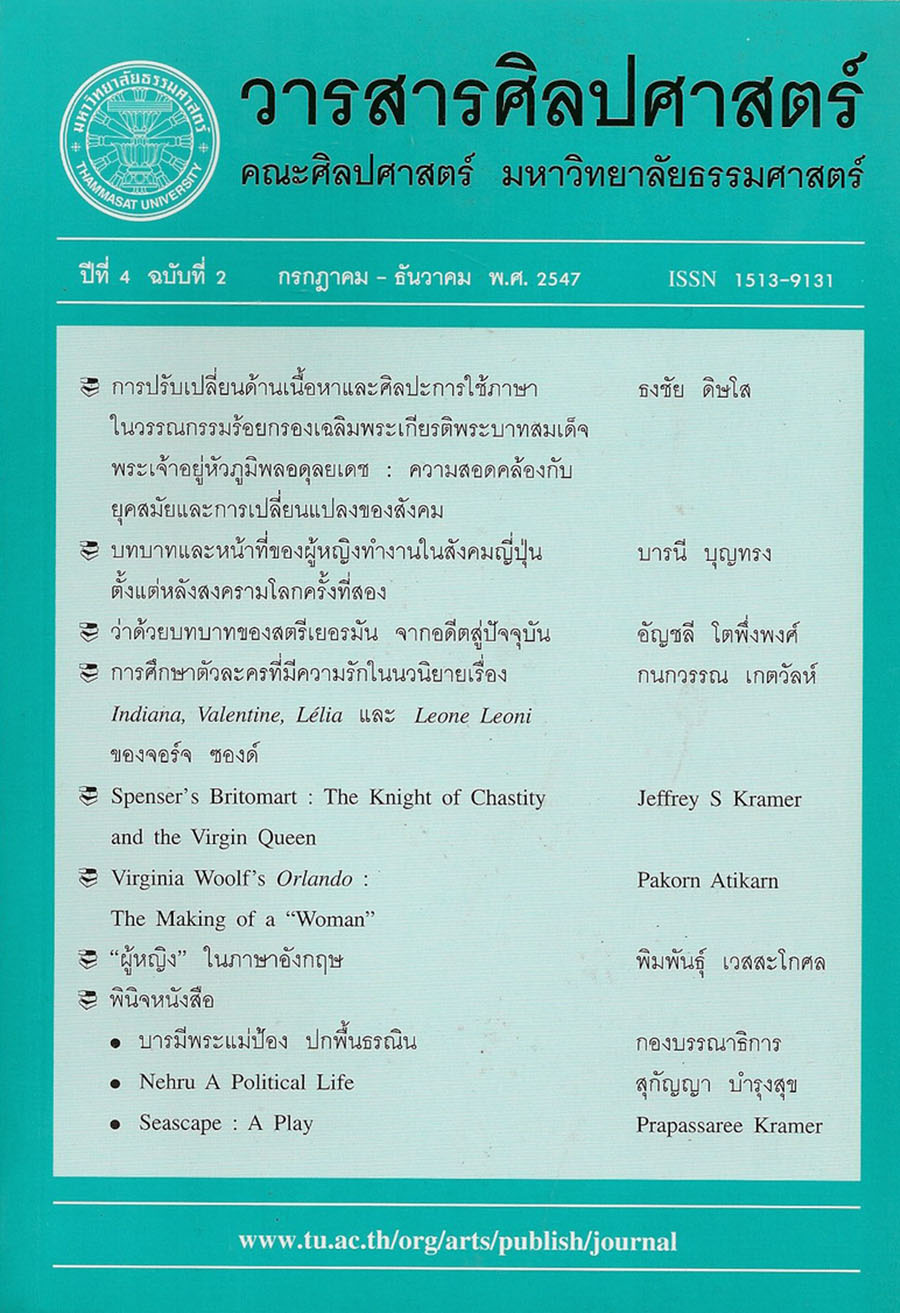Spenser's Britomart: The Knight of Chastity and the Virgin Queen
Main Article Content
บทคัดย่อ
The Faerie Queene of Edmund Spenser has virtually been assigned the status of the ‘official poem’ of the Elizabethan era, the one work most closely reflecting the ideals and assumptions of the court and of its revered and dreaded head, The Virgin Queen. In Book III of the poem, however, we find a far more interesting and complex relationship between the poet and his sovereign. Naturally, in “The Legend of Britomart, or of Chastity,” there is flattery of Queen Elizabeth, and apparent assent to her exaltation of virginity as the ideal state for womankind; but the narrative constantly asserts a contrary ideal, in which even the heroine who represents chastity must bow to the demands of the God of Love.
The Faerie Queene โดย Edmund Spenser เป็นวรรณคดีซึ่งเป็นที่ยอมรับกันว่าเกือบจะมีสถานภาพเทียบเท่ากับโคลงประจำรัชสมัยของสมเด็จพระเจ้าอลิซเบท (ที่ 1) The Faerie Queene เป็นวรรณคดีเรื่องหนึ่งซึ่งสะท้อนให้เห็นอุดมคติและความเชื่อของบุคคลในราชสำนัก และอุดมคติและความเชื่อที่บุคคลเหล่านี้มีต่อประมุขที่ได้รับความเคารพและยำเกรงอย่าง “ราชินีผู้ทรงพรหมจรรย์” แต่ในโคลงเล่มที่สามของวรรณคดีเรื่องนี้ ผู้อ่านจะค้นพบความสัมพันธ์ที่น่าสนใจและสลับซับซ้อนอย่างมากระหว่างกวีและพระราชินี ตามปรกติแล้วตำนานของ Britomart หรือตำนานแห่งพรหมจรรย์นี้ดูอย่างผิวเผินจะเป็นการสรรเสริญพรหมจรรย์ว่าเป็นคุณสมบัติในอุดมคติของผู้หญิง แต่การเล่าเรื่องได้แสดงถึงอุดมคติซึ่งขัดแย้งกับอุดมคติของพรหมจรรย์ตั้งแต่ต้นจนจบ แม้แต่ตัวละครเอกของเรื่องซึ่งเป็นตัวแทนของพรหมจรรย์ก็ยังต้องพ่ายแพ้แก่เทพเจ้าแห่งความรัก


